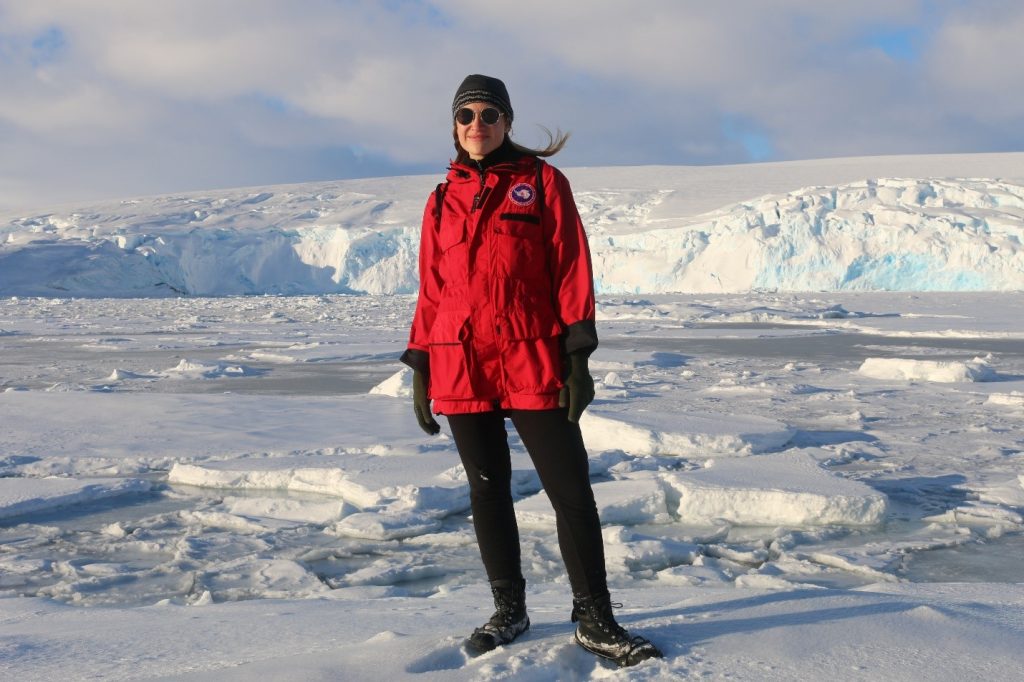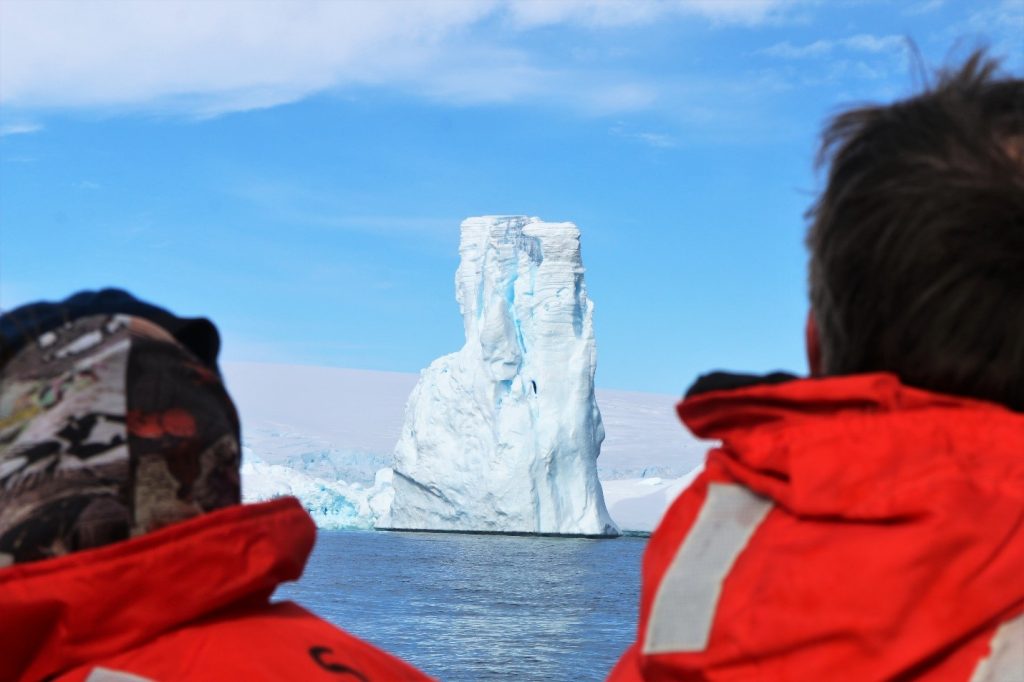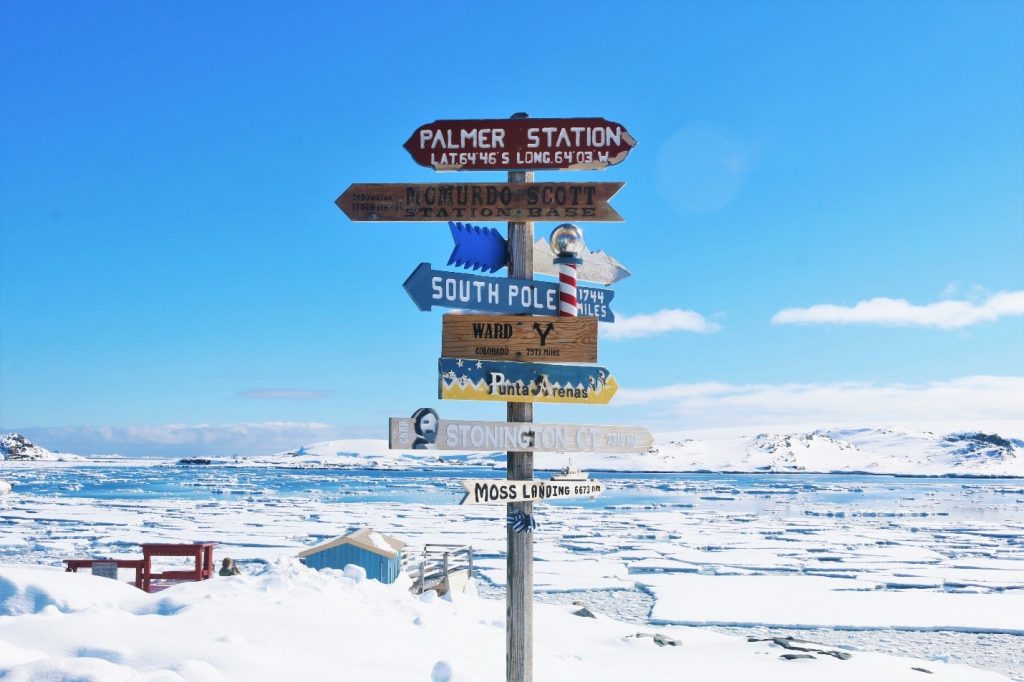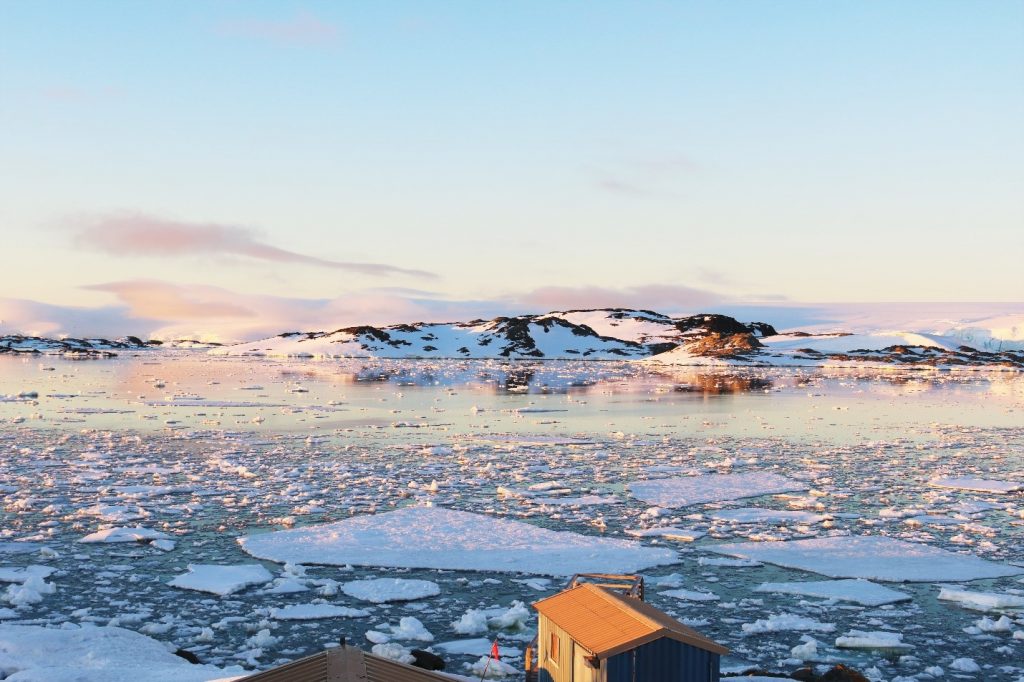By Emmalina Glinskis
I am a recent graduate from Columbia University with a degree in Environmental Science (CC ’17) currently working as a field scientist and technician at the U.S. Antarctic Program at Palmer Station. I am helping out Dr. Hugh Ducklow from the Earth & Environmental Sciences department at Columbia studying the microbial communities of Western Antarctica.
Being in Antarctica has been a true inspiration in understanding how landscapes react in real-time to human-induced warming, as this one of the most climate-vulnerable places in the world, warming by seven degrees Celsius over the past 50 years. To give some context, Western Antarctica is now warming at a rate five times higher than the global average temperature trends. This warming means that the sea ice duration, which naturally fluxes during the winter and summer seasons, is sticking around for 100 fewer days since 1978. As a result, phytoplankton productivity, which provides a key role in absorbing carbon from the atmosphere into the oceans, is decreasing in parts of the northern peninsula region, and affecting all other levels in the ecosystem that depend on it to survive.
Adélie penguin (Pygoscelis adeliae) populations that depend on lower trophic level success have shown severe population declines of about 80% around Palmer, as they are beginning to be outcompeted by penguins from lower latitudes like Gentoo penguins (Pygoscelis papua). Some scientists attribute these declines not only to climate change and sea ice loss, but the persistence of pollutants like DDT that can transport and condense in cold, high latitude areas. Ironically, while DDT has been banned (thanks in part to Rachel Carson’s famous environmental book Silent Spring), the glacier behind Palmer has been found to contain traces of DDT that may be entering and hurting the food web. Land-based ice is melting too, which has a marked implication for sea-level rise. The Marr Ice Piedmont, the glacier behind our station, used to almost touch Palmer’s backyard when it was founded in the 1960s. Now it has retreated over 400 m, at a rate of 10 meters every year. I can hear the thunderous sound of it calving when I go out for hikes or skiing and boating trips—it’s a powerful roaring noise that really makes you think about what our human impact is costing us.
Palmer is a hub of biodiversity—filled with numerous species of seabirds, penguins, whales, seals, fish and little zooplankton like krill. It is a big reason for the research I am doing as a member of the microbial component of the National Science Foundation’s LTER (or Long Term Ecological Research Station) here at Palmer Station. In the research group I’m part of at the Ducklow lab, we’re examining the heterotrophic bacterial production rates at the base level of the ecosystem here. Bacteria in these oceans play a vital role in the carbon cycle, exporting organic matter (both dissolved and particulate) from other critters which is then stored in the deep ocean. In other words, the microbial loop in our oceans helps store carbon for many years, and determines the oceanic ecosystem response to the cycling of carbon under climate change. While the effects of the microbial community due to recent warming are complicated, it is possible that decreasing ice and higher temperatures will lead to more light hitting ocean surface waters, which means more primary productivity (like algal blooms that we see here in the summertime). This will bring up the dissolved organic carbon values, ramping up bacterial production and routing carbon through this pathway at the expense of other food webs with larger organisms (think about the emaciated polar bear in the Arctic!). Thus we want to keep a close eye on how the carbon cycle may shift due to environmental change.
The LTER program exists all over the U.S. and Antarctica, and it has proven extremely valuable in these changing environmental times. No other dataset in the Western Antarctic has a completely uninterrupted time series of data on community ecology, allowing us to see the bigger picture of biological and climatological change in this vital area. We go out sampling in the same locations biweekly, giving us a seasonal picture of ecosystem health since the project began in the early 90s. There’s also an important LTER cruise in Western Antarctica in January and February that gives us not only temporal consistency, but an important spatial context since the cruise performs science experiments along different transects as it moves down the peninsula.
Another aspect worth sharing about this place is the inspiring dedication towards the vital research being done down here. I see it in each individual who works at Palmer Station. People should continue to support the National Science Foundation (NSF), which provides federal funding for these projects, NOAA, and any conservation organization focused on the Antarctic like the Polar Oceans Research Group based in Montana, lead by William Fraser. Their group is crucial in helping monitor much of the larger wildlife in this region, like seabirds and penguins. I hope the public keeps supporting science, especially climate change science, in these difficult political times. Science is based on learning through observation and experimental study, and builds its whole discipline on an intense vetting process of fact-based accuracy. Citizens should stand up against political measures that aim to wipe out important climatological databases or reports based on words that might be seem unfavorable, yet stand to be strikingly true. We should stand up for the aspiring academics, helping them keep their wages while studying under PhD programs rather than financially cutting away at an already challenging career path. Projects like the LTER provide one of the most valuable toolsets to understanding how climate change has and will affect communities around the world. It is the first marker of an era of great change, and may hold the tools to innovate real solutions, politically and scientifically. Support science, support Antarctic conservation work.
Photos below: Emmalina Glinkskis








